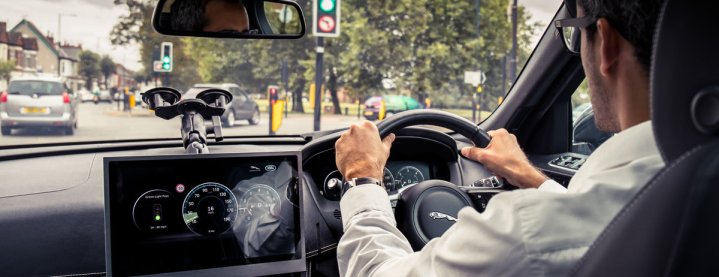
We’ve all been faced with the challenging decision of what to do when we’re driving at full speed and the stop light turns yellow. Do you slam on the brakes or do you keep going? Those types of situations aren’t just tough, split-second calls—they can also be potentially dangerous for you, your car, and other drivers. Jaguar Land Rover wants to put an end to those situations, and it is working on the technology make sure you never get stuck skidding to a red light again.
The British car manufacturer has developed what it calls the Green Light Optimal Speed Advisory, or GLOSA. The system uses vehicle-to-infrastructure (V2X) technology to communicate with traffic lights and gather information about when the light will change. As you drive toward the intersection, GLOSA will inform you just how fast you need to drive in order to avoid getting stuck at the light — or worse, getting stuck in between and having to make a dangerous decision.
The GLOSA system isn’t widely available yet. For now, it’s being trialed in the Jaguar F-PACE, a luxury crossover SUV that already has its fair share of high-tech features including Advanced Driver Assistance that can warn about a potential collision, keep you in the right lane, and help you park. GLOSA expands the capabilities by connecting to other vehicles and structures on the road that can add information and effectively expand the line of sight for the car.
The test run of GLOSA is part of a 20 million British pound government-funded project called U.K. Autodrive. The program is designed to help expand the capabilities of self-driving and connected technology to improve safety on the roadways.
The system should not only save people from sitting at red lights for an inordinate amount of time during their commute, but it will also help to cut down on harmful accidents. If it works effectively, it should also cut down on congestion on roadways and on emissions as fewer cars will be left idling at lights. A little communication between cars and lights could go a long way toward improving the roads and the world.
Editors' Recommendations
- You’ll have to imagine how fun the new OnePlus Nord 2 x Pac-Man phone looks
- Ford says its future V2X-equipped cars will talk to pedestrians, infrastructure


